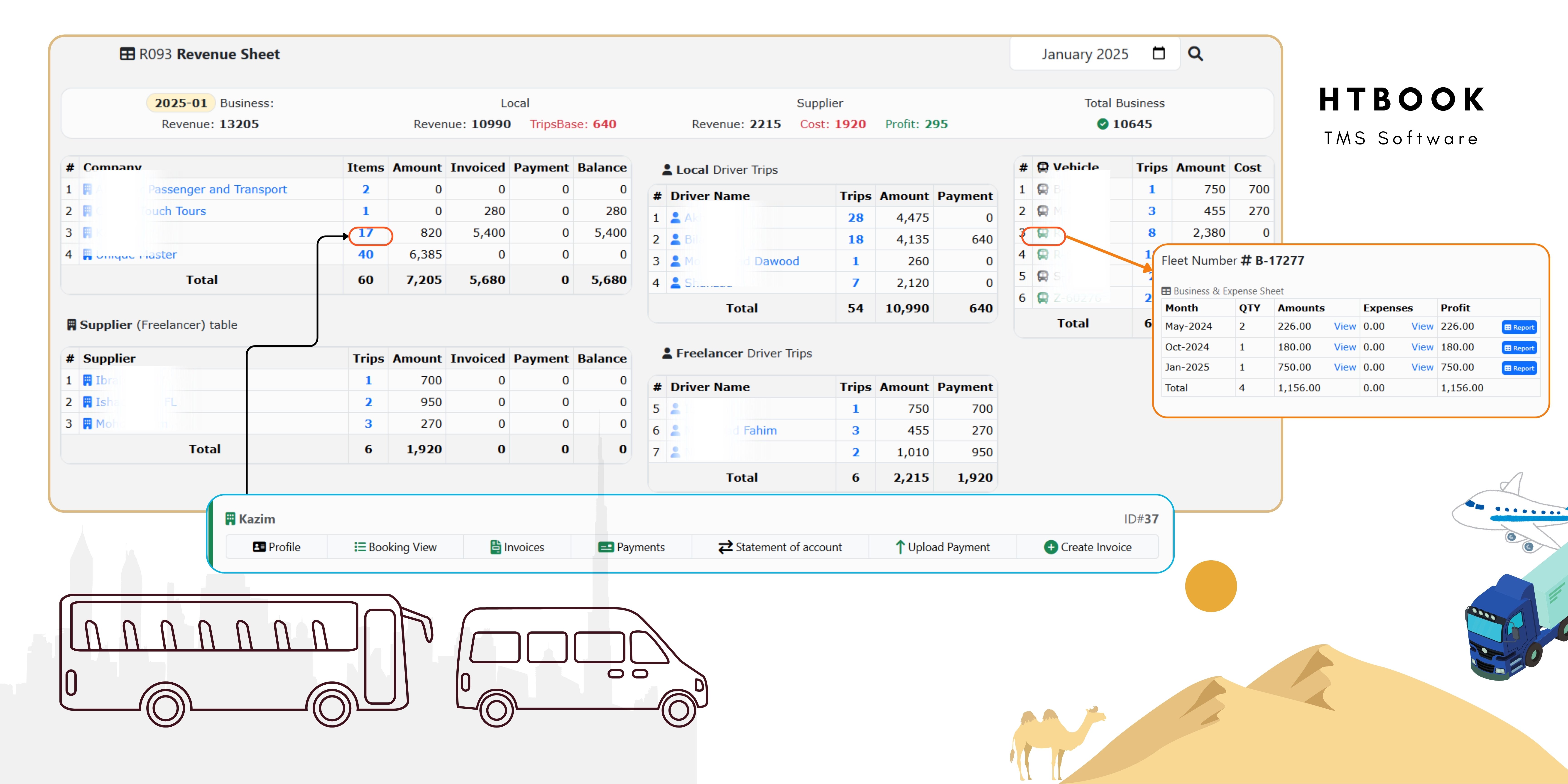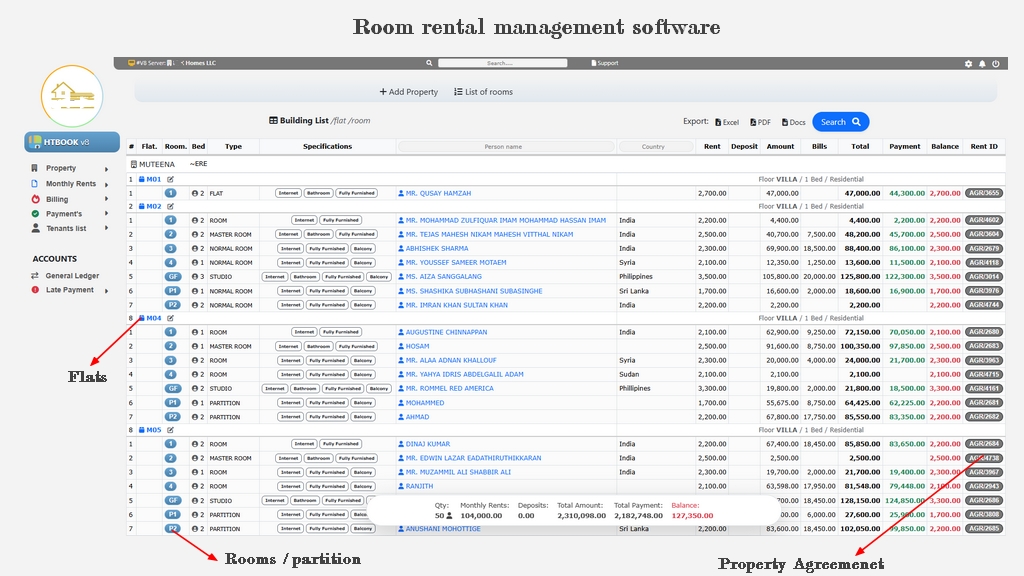
Enhancing Transport Business with Smart TMS Solutions
The transport business connects goods, people, and services through road, air, rail, and sea networks. Learn how modern transport management software like HTBOOK Technology helps logistics, rental, and passenger companies manage bookings, track fleets, create invoices, and grow faster wi...
About the Transport Business
The transport business is about moving goods and people from one place to another safely and efficiently. It includes road, rail, air, and sea transport. Transport companies handle logistics, delivery, and passenger travel. With e-commerce and global trade growing, transport services are always in high demand.
Modern transport companies now use Transport Management Systems (TMS) and other digital tools to plan routes, track vehicles, manage drivers, and reduce fuel and operation costs.
Explanation of the Transport Business
The transport industry provides services that help move people or goods using different types of vehicles:
- Road transport – trucks, buses, cars
- Rail transport – trains
- Air transport – airplanes, helicopters
- Sea transport – ships, boats
Companies may focus on:
- Freight transport – moving goods and materials
- Passenger transport – carrying people
- Logistics and delivery – managing storage, timing, and routes
Types of Transport
- Air Transport
- Sea Transport
- Land Transport
Air Transport
Air transport moves people and goods through the air using airplanes and helicopters. It is the fastest mode of travel, ideal for long distances and international trade. Airlines and cargo companies use this system to deliver goods quickly across countries.
Sea Transport
Sea transport moves goods and passengers by water using ships and boats. It is one of the oldest and most cost-effective methods, perfect for carrying large or heavy cargo over long distances. It plays a vital role in international trade and connects global markets.
Land Transport
Land transport happens on roads and railways. It is the most common and affordable form of transport, used for both short and long trips.
Road Transport
Road transport involves moving goods and people using vehicles such as cars, buses, vans, and trucks. It offers flexible, door-to-door service and is ideal for short and medium distances.
-
Passenger Transport
- Public Transport: Shared services like buses, trains, and metros that operate on fixed routes and schedules.
- Private Transport: Personal vehicles like cars, motorcycles, and bicycles owned by individuals or families.
-
Tourism Transport: Vehicles like taxis, buses, and minibuses used for tourist travel.
- Taxis: Used for short city trips, airport transfers, and hotel pickups.
- Buses: Affordable and reliable for city-to-city and tourist group travel.
- Minibuses: Smaller vehicles ideal for short-distance or small-group travel.
-
Goods Transport
- Trucks: Carry heavy or bulk goods like food, materials, and machinery.
- Pickups: Used for light or medium deliveries and easy access to small areas.
- Trailers: Large containers used for long-distance and heavy cargo transport.
Rail Transport
Rail transport moves passengers and goods using trains on railway lines. It is reliable, cost-effective, and energy-efficient, suitable for long-distance travel and heavy cargo. Railways play an important role in connecting cities and ports for trade.
Benefits of the Transport Business and Management
- Transport is always in demand for moving goods and people.
- You can start small and grow by adding more routes and vehicles.
- It creates jobs and supports other industries.
- Software tools make management, tracking, and cost control easier.
- Online booking and tracking increase customer trust.
- Automation reduces manual work and increases profits.
Which Type of Transport Is the Best?
Each transport type has its own advantages, but road transport is often considered the best because it’s flexible, affordable, and can reach places that air, sea, or rail transport cannot. It provides direct, door-to-door service and is ideal for both short and long-distance travel.
How to Grow a Transport Business
-
Provide good and timely service:
- Deliver goods on time to build trust and gain repeat customers.
- Happy customers help your business grow through recommendations.
-
Choose your service type and specialize:
- Focus on cargo, passenger, or local transport to become an expert in one area.
-
Keep vehicles in good condition:
- Regular maintenance avoids breakdowns and improves safety.
-
Use modern technology:
- Software helps plan trips, track drivers, and save fuel.
-
Expand and market your services:
- Offer services in new areas and promote them through social media and online ads.
-
Follow legal rules and review performance:
- Keep licenses and documents updated and review business performance regularly.
How We Can Help Improve Your Transport Business
At HTBOOK Software, we provide complete digital solutions to simplify operations, improve efficiency, and grow your business.
Our Transport Management System (TMS) includes real-time vehicle tracking, route optimization, automated dispatching, and online booking — all in one platform.
We help transport companies manage fleets, monitor drivers, reduce costs, and improve customer satisfaction with online booking, tracking, and instant notifications.
Drivers can use our mobile app for routes, trip updates, and proof of delivery. We also provide billing, payment tracking, and reporting tools to manage finances easily.
With data analytics, companies can make smarter decisions using trip history, fuel use, and delivery reports. Our goal is to help transport businesses stay organized, competitive, and ready for the future.

